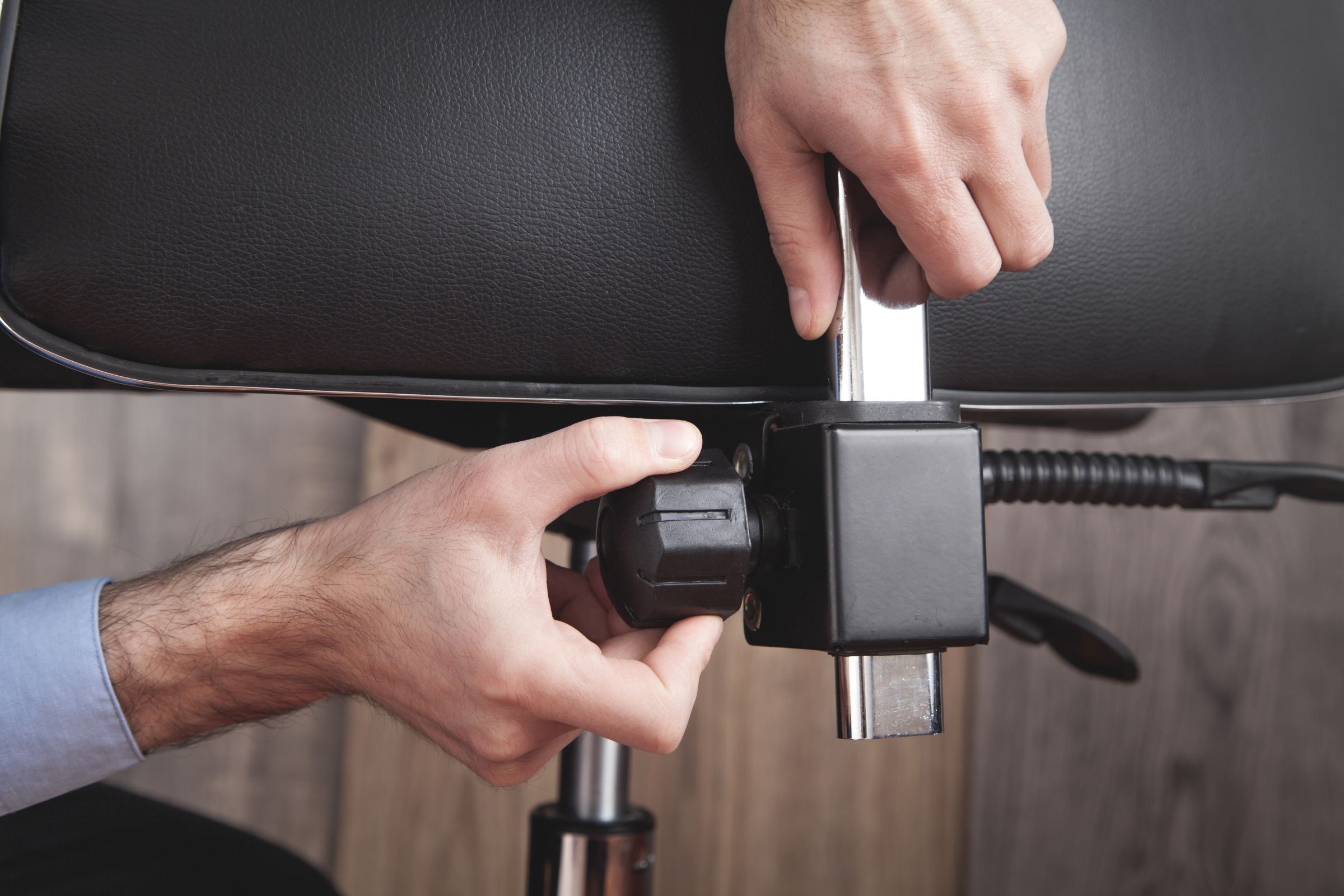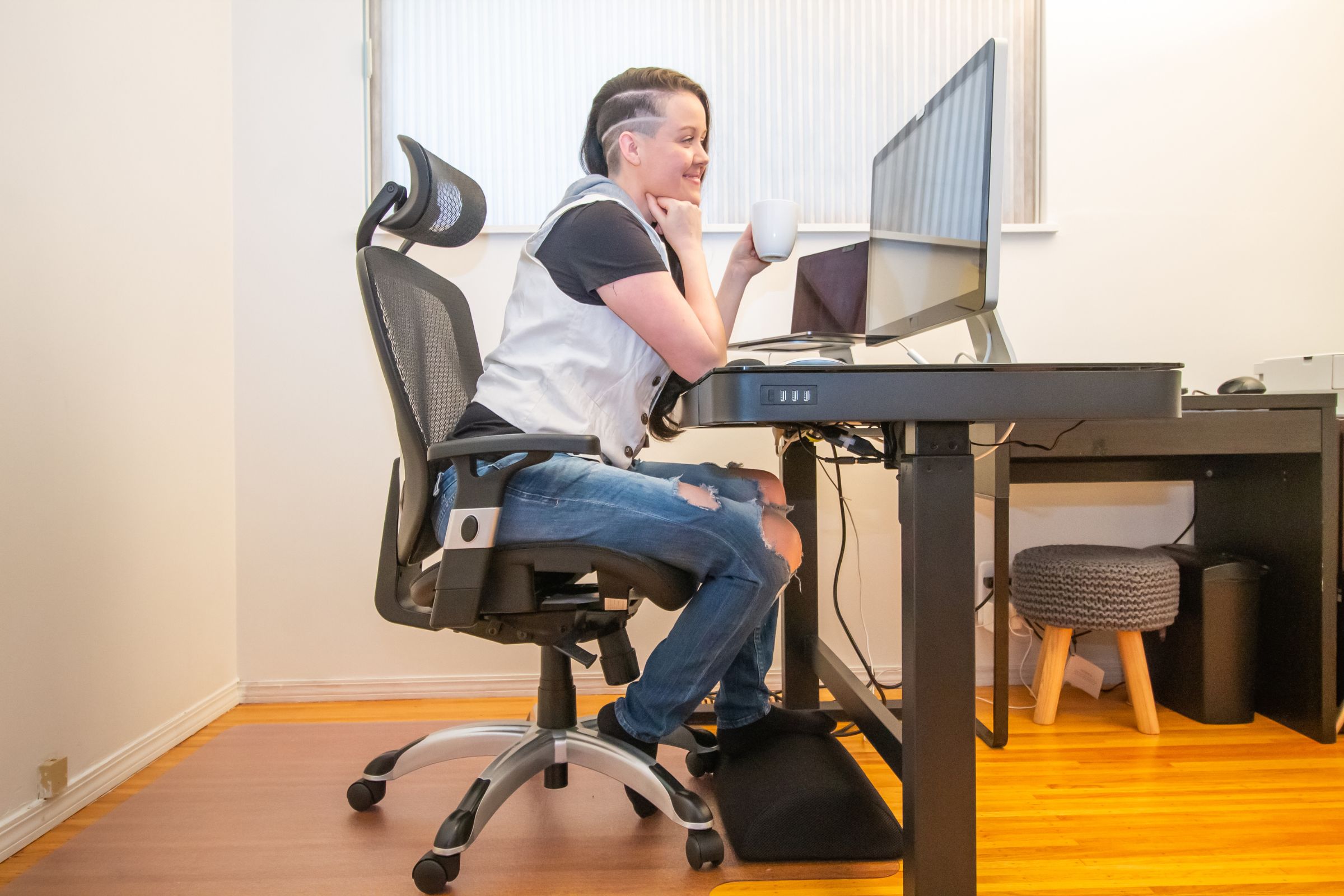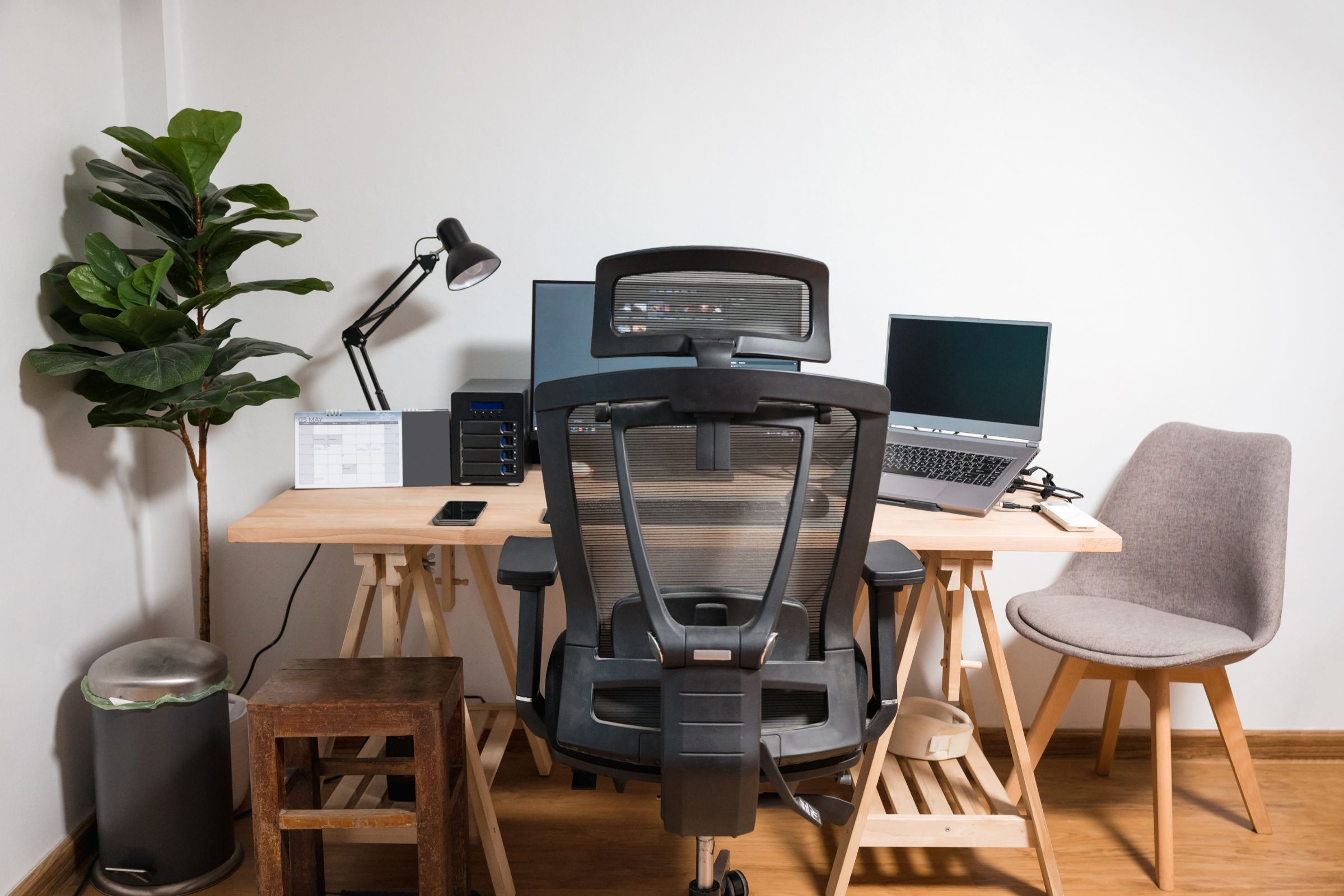Long hours at the desk are the norm in many industries, making it paramount to…

How to Set Up Your Ergonomic Chair: Tips for Proper Posture and Alignment
You have probably heard how important it is to get an ergonomic chair. However, common sense tells you that there is no way that a single ergonomic chair can be right for everyone. You have to pick the right chair. Then, once you have the right chair, you need to set it up correctly. That is why we have put together some tips for proper posture and alignment in your ergonomic chair.
Almost all ergonomic chairs are adjustable. In fact, if you are going to buy an ergonomic chair that is not adjustable, stop. Even if you have one custom-built for you, bodies and needs can change over time. An ergonomic chair that is not adjustable is a waste of money.
Not all ergonomic chairs have the same types of adjustments. However, most of them will let you adjust for height, depth, and lumbar support. Other chairs may let you adjust headrests, footrests, armrests, and more.
One of the major tips for proper posture and alignment is seat height. Your chair should be at a height that is right for you. You should be able to sit with your feet flat on the ground, with your legs at a comfortable 90-degree angle. If your desk setup does not let you set up your chair low enough to the ground, use something to rest your feet. Even a big stack of books will do!
If you can adjust the seat depth, you want to leave it where there is at least an inch between the end of the seat and the back of your knees. If you cannot adjust the seat depth on the chair, you might consider using a pillow or back support to help correct the depth.
You want the backrest to be at the correct height. The lumbar area should fit into your lower back. If it is not adjustable, you may be able to use a cushion to get you to the right height. Of course, if your back is above the lumbar support, a pillow will not help. You may be able to adjust the tension as well. You want your backrest to give you some freedom of movement. However, you want the tension to be enough to keep you from moving erratically while trying to work. Finally, if the backrest has an adjustable lumbar support, adjust it to your personal preferences. You may need to try different depths to see which one works best for you.
Not all seats have adjustable armrests. If yours does, you want the armrests at your natural elbow height when your arms are resting at your sides. Make sure both armrests are at the same height. Adjust the width and pivot to your personal preference.
Some office chairs have headrests. If yours does, it should provide support for your head. You want the headrest to hit the bottom of the back of your head. You should be able to sit up comfortably with some support from the headrest. The headrest should not push your head down or forward.



